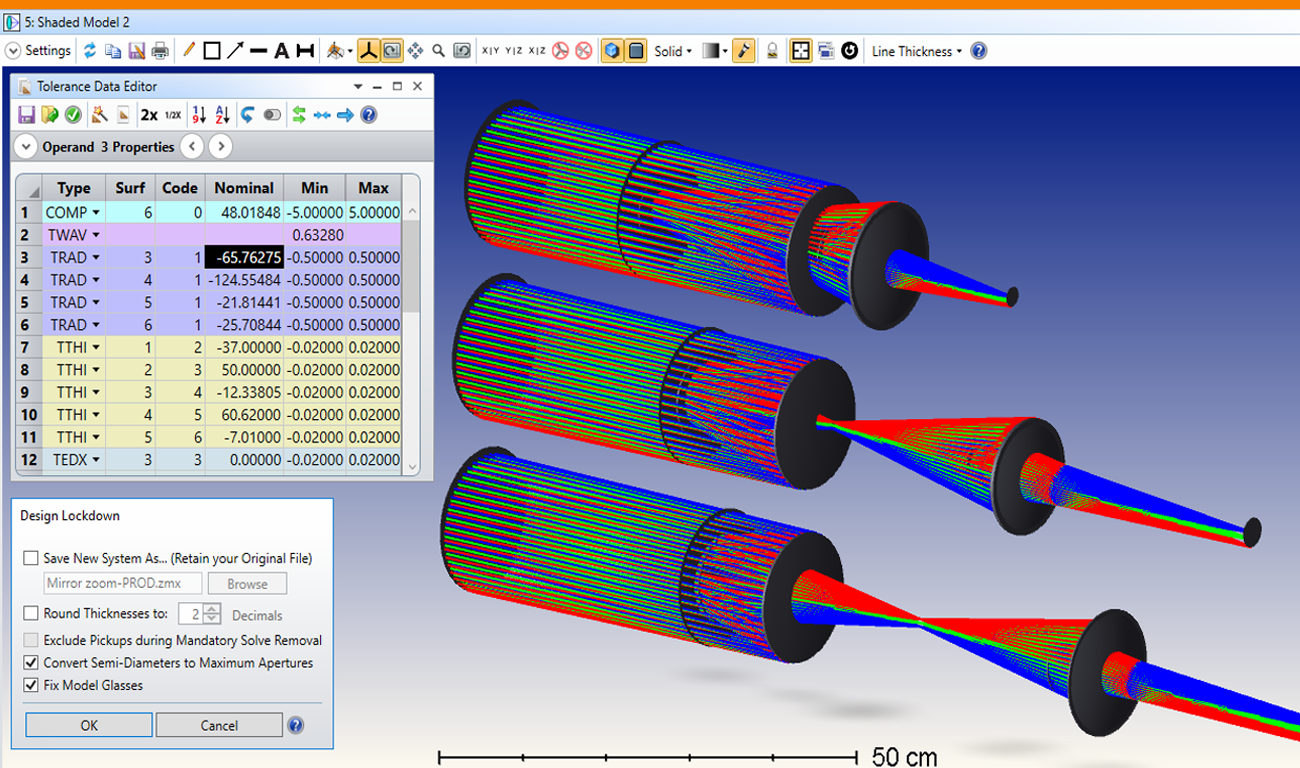
The position of each surface along the optical axis is referenced to the previous surface. Each surface has its own local coordinate system. You can easily reorder them by click on the column header and dragging to a new position.Įach row corresponds to an optical surface. These columns are organized in a default order. The latter five data items are used to define the majority of optical components. The Lens Data Editor has columns for Comments, Radius, Thickness, Glass, and Semi-Diameter (radial clear aperture) and Conic constant. Default dock/float behavior can be set in the Project Preferences or in the Setup.Window Control group. If it is floating, it can be moved and resized to any convenient location. The window containing the editor can be docked or floated. The features in the toolbar can be changed via: File.Project Preferences.īeneath the Ribbon Bar is the Lens Data Editor. When you first open OpticStudio (either the demo or full, licensed versions), you will see the Ribbon Bar, toolbar, System Explorer, status bar, and Lens Data Editor (LDE).Īll of the features that OpticStudio has to offer can be accessed through the various menus in the Ribbon Bar, the editor specific toolbars, or the system explorer. Shortcuts to most of these features are available for convenience in the toolbar above the Ribbon Bar. Many conventional optical systems can be classified as imaging systems, including photographic objectives, telephoto lenses, microscopes, telescopes, relay lenses and spectrometers.

Sequential ray tracing is computationally fast and is extremely useful for the design, optimization, tolerancing, and analysis of such systems. Imaging systems are well described by sequential surfaces. In sequential ray tracing, rays are traced through a pre-defined sequence of surfaces, hitting each surface only once, while traveling from the object to the image plane. Geometrical optics involves ray tracing - a widely applicable technique for modeling the propagation of light through an optical system.

The discussion includes demonstrations setting system properties, using layouts, and some basic analyses, extended source modeling, and modeling off-axis systems. This article introduces prospective and new OpticStudio users to the capabilities of Sequential Mode. This article is part of the Getting Started with OpticStudio free tutorial.


 0 kommentar(er)
0 kommentar(er)
